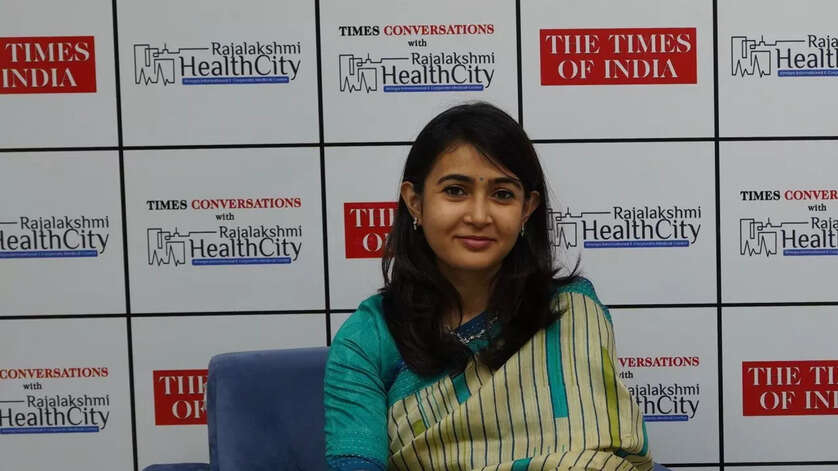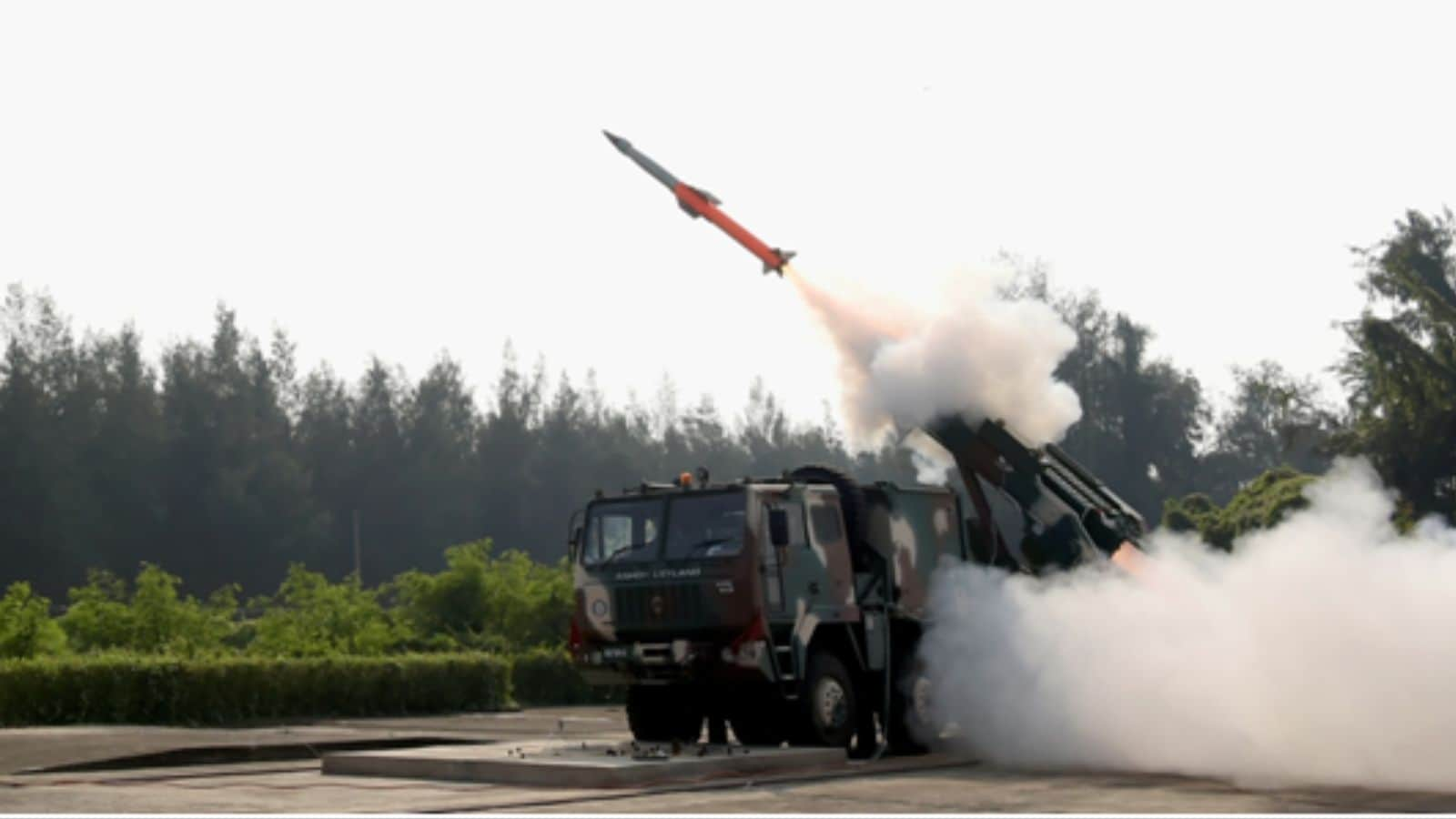ARTICLE AD BOX

People assume Artificial Intelligence is going to take over the role of doctors, but it offers varied opportunities. Artificial Intelligence (AI) is helping healthcare and hospital management professionals streamline operations for patients and doctors alike, while also developing personalised treatment and protocols.
A lot of work happens behind the scenes, and AI helps in managing patients and their treatment, says Dr. Apoorva Haree, a seasoned professional in the healthcare field who has adopted advanced medical technology. As part of Times Conversations, Dr. Apoorva, Executive Director, Rajalakshmi Health City, shared her insights on a wide range of issues, especially the role of AI in Healthcare, Medical Engineering, and more.
TOI Spotlight | Dr. Apoorva Haree on How AI is Transforming Healthcare | Rajalakshmi HealthCity
AI will not take away jobs in health careAllaying fears that AI is going to take over diagnosis and treatment, and make doctors’ jobs redundant, Dr Apoorva says that it offers profound benefits in the areas of health care, especially in protocols. This assumes considerable significance as managing hospitals is not as easy as people generally assume to be. “AI is making health care service better for health care professionals and patients alike. People are scared that robots are going to perform all surgeries, be it Laparoscopy or endoscopy.
Robotic Surgery is gaining a lot of popularity now. When Laparoscopy was gaining popularity a few years ago, this powerful tool of AI is best utilised when combined with experienced and compassionate human beings and doctors. I do not see it (AI) taking over health care anytime soon,” said Dr Apoorva, while being very specific about the role of modern medical technology, especially about AI.
To a specific question about chatbots replacing human medical assistance, Dr Apoorva replied that the best use of AI through a chatbot is to determine if a patient’s medical condition requires emergency medical assistance or if it can wait for a few more days.
The seasoned medical professional said that any medical condition could have better medical outcomes if diagnosed, identified, and treated earlier.AI, Dr Apoorva observed, had the potential to access millions of data points and decipher whether a patient needed emergency medical attention or if the same condition could wait for a few days to be addressed by experts. Emerging technology in health care“It will be great if someone who does not have access to healthcare immediately, could contact an AI Chatbot ‘this is what I am going through, and what do you think’ and not rely on it for a diagnosis or a treatment plan, but to let the patient know the patient to seek what medical care they need or not.”Sharing her observations in areas such as Radiology, among others, Dr Apoorva says AI can process large amounts of data and millions of scans. “When a Radiologist goes through an imaging, each of them comes to what we call slices, and the Radiologist has to go through every slice. This requires a lot of time and focussed attention. So how AI can actually enhance this process is by bringing to light, anything that looks out of the ordinary – be it a tomour, or an infection.
AI can pick this up and bring it to the doctor’s attention. This is the same thing about Pathology too,” Dr Apoorva adds.
Critical role in chronic health issuesWhile sharing her insights about role of AI in chronic conditions like Hypertension and Diabetes, Dr Apoorva, who has made a mark for herself through her stellar work in improving health policies and education, says, that considering that the majority of the health care burden of the country is worried about such chronic ailments, AI could help as a guiding light.
“A lot of devices, especially wearables can be used to monitor conditions like sugar, blood pressure, and if one of these parameters is off the normal, these devices can alert the patients.
This will give the patients an opportunity to seek treatment before anything major happens – be it an episode of high BP or sugar. AI could be wonderful in taking preventive care and not wait until incidents occur. AI could be used to remind patients to take their medications on time, which many patients often forget due to the hustle and bustle of daily life.
This will be a great application of AI.” Role of engineers, engineering in path-breaking health careAI, Dr Apoorva says is a very powerful tool, it analyses data and gives answers and it can probably suggest the best course of treatment, but it cannot provide the same treatment that can be done only people – doctors, nurses, and rest of the healthcare professionals, especially considering that machines cannot do the emotional support from people. There are other factors as well, including family history and additional data that only medical staff can review.
While being explicit, Dr Apoorva says the notion that “AI can never be wrong is completely wrong, because, as everyone knows, AI still suffers from hallucinations where it has answers, while it does not have a clue as to what is happening, but we are actively working on this.” Dr Apoorva says “AI is revolutionising the field of healthcare, and that is really exciting for everyone. At Rajalakshmi Institutions, we are particularly excited about our latest centre, called RADAR – Rajalakshmi Advanced Diagnostics and Applied Radiomics.
This is a pioneering centre where expertise of engineering from Rajalakshmi Institute of Technology (RIT) is combined along with Rajalakshmi Health City.
As far as the application of AI in Rajalakshmi Health City is concerned, Radiology instruments, especially CT and MRI, are AI-enhanced. This helps radiologists make the process smoother – for both the doctor and the patient. This makes it possible for Radiologists to identify conditions more easily, while also facilitating optimal positioning for patients – without requiring repeat scanning.
This helps save time, and more importantly, radiation exposure, elaborates Dr. Apoorva, adding that this is one critical area where AI can make the entire process smoother and more efficient. This is how AI is helping Radiologists and how we are embracing this technology, she adds. RADAR is a space where engineering and healthcare professionals meet to provide solutions for healthcare problems. “At Rajalakshmi Health City, we have cutting-edge technology, and AI enabled radiology, MRI, and CT machines.
We provide a platform for engineers to solve problems that we have not yet been able to solve. The engineers can visit our centre, enable our AI instruments, collect data, and identify problems that need to be solved, and actively work towards becoming a pioneer in the field of Health tech and ‘AI in health care.
’” DrApoorva adds that this was one focus area where they were looking at for collaboration between RIT and Rajalakshmi Health City for growth. While asked about her counsel to the next generation, Dr Apoorva was very forthcoming: “Keep an open mind, do not shut yourself off from technology, as it is here to stay. Learn how to adapt and incorporate technology into everyday decisions, as that will be beneficial. Going forward, there will be a lot of use of technology in healthcare. Just be curious as that will take you far,” is her message. Quantum Computing will help solutions in short time for complex, real-world problemsDr Sundar R, Director, Rajalakshmi Institute of Technology, whose rich experience in engineering and academia spans over 3 decades, made a deep dive into Quantum Computing, stating that they were the front runners in this space, procuring Quantum Computers last year, which will soon be inaugurated.
The idea behind this initiative, he said, Quantum Computing can now provide lot of high-performance solutions in a very short time too, in emerging areas and RIT was introducing the right requirements for budding and ‘future-ready’ engineers.
This, Dr Sundar said, will drive both meaningful applications of AI and Quantum Computing to arrive at solutions for real-world problems. “It is with this anticipation that we have introduced into our system and made it as a part of our curriculum.
In the context of AI and AI-driven systems, there is a need for awareness about the tools available to them. The digital fluency should be good and be in a position to use all the tools relevant for working alongside AI systems in the right way,” Dr Sundar said while speaking in length about the handling of sophisticated engineering and IT systems in healthcare.
AI and Smart CitiesDr. Sundar said that AI was a data-driven approach and much of the learning happens through what is available and then built on that.
“Engineers should be conversant with data-centric approaches and leverage their capability with AI systems to provide meaningful solutions,” he remarked. “Smart Cities need to be aware what is happening – know where traffic problems are taking place, and be able to handle emergency situations in the right way, manage energy requirements for the city, tackle solid waste management. In all of these, the data-centric approach, and the ability to use the known data for a predictive pattern to be able to handle situations so that no more problems are created, rather arrive at solutions,” Dr Sundar explained.
Engineers can simulate solutions through AIWith more and more people using AI as it is convenient, Dr Sundar said, adding: “We at RIT make a conscious to provide a background to students so that they understand the tools and arrive at solutions. We have now taken a lot of effort in adopting AI and implementing within our institution. Engineering goes through a lot of trial-and-error processes, which keeps telling engineers to keep trying again with many different approaches before zooming on the solution.
”As AI leverages a lot of history, and data, people have at their fingertips, capabilities they were unaware of due to their background. “It is now possible for people to quickly use AI techniques and Generative AI methods to design, and then use a digital twins and other schemas to ensure that simulation for a solution can be designed, and also use all the AI tools to test and validate how the solution works. This makes it a lot easier for a design and development cycle.
AI does not bring the expertise of just one person, but the ‘expertise of a lot of experts’.” AI and smart grids, energy systemsWhile asked for his insights about role of AI in energy, Dr Sundar replied that a problem with sources of alternative energy systems – solar, wind, wave, and other emerging forms, was that they were not continually available. “The ability to predict and understand the trend in energy systems especially the needs – be it spikes, weather forecast – if this prediction is able to be made possible and support could be provided, a seamless energy solution that optimises and uses all of these sources in the best way possible can be ensured,” he said.
AI integration in robotics, manufacturing automation:Robots have certain functionalities that are similar to humans, but to bring intelligence, there is a need for AI, and once AI is integrated with robots and automation framework, semi-autonomous systems can understand the environment, see how machines are performing, take appropriate actions leading to a high-performance, and high-production, Dr Sundar said. Disclaimer: The views/suggestions/opinions expressed in the article are the sole responsibility of the experts and the brand concerned. This article has been produced on behalf of Rajalakshmi Institute of Technology & Rajalakshmi Health City by Times Internet’s Spotlight team.



.png)
.png)
.png)
















 2 hours ago
6
2 hours ago
6









 English (US) ·
English (US) ·